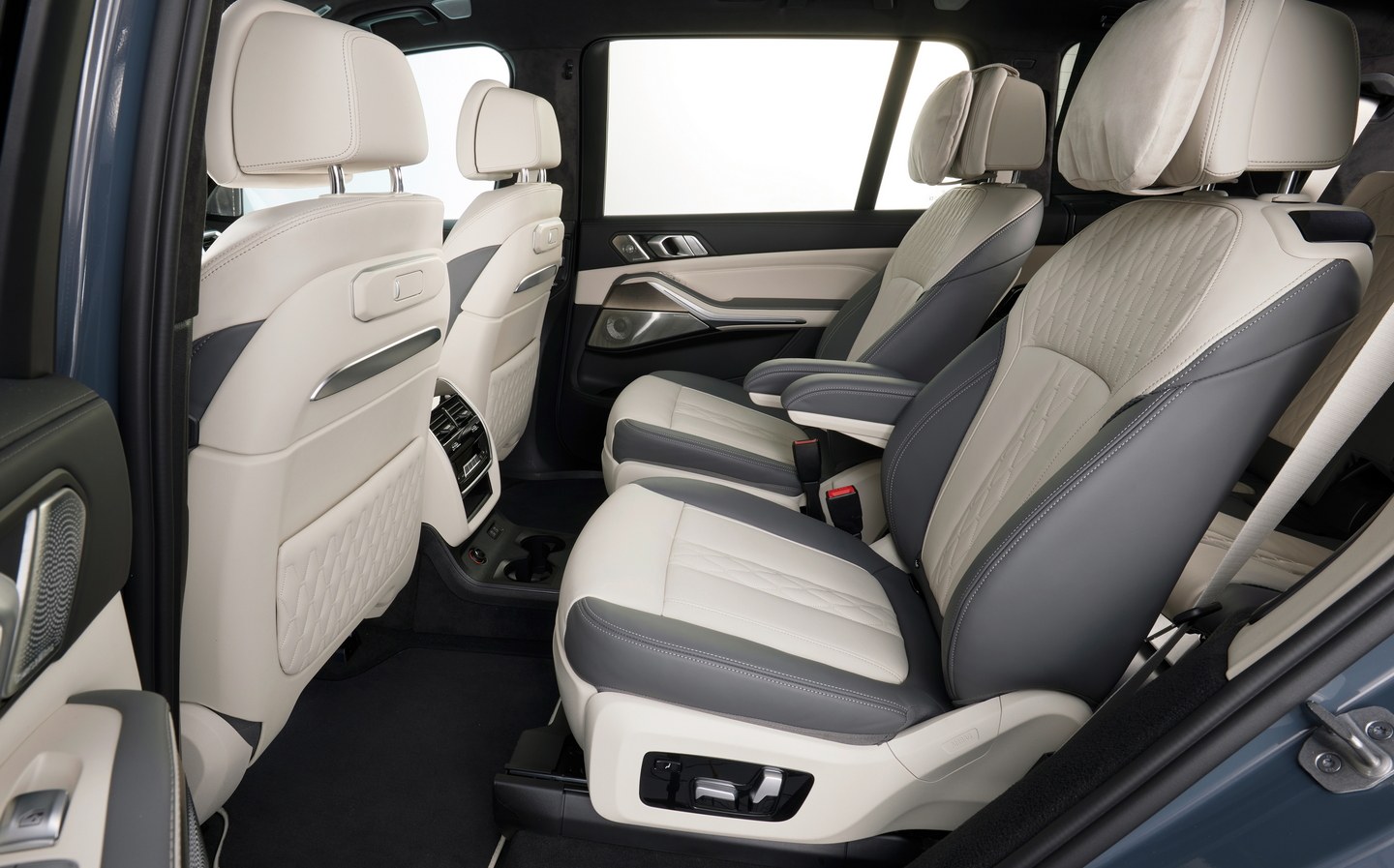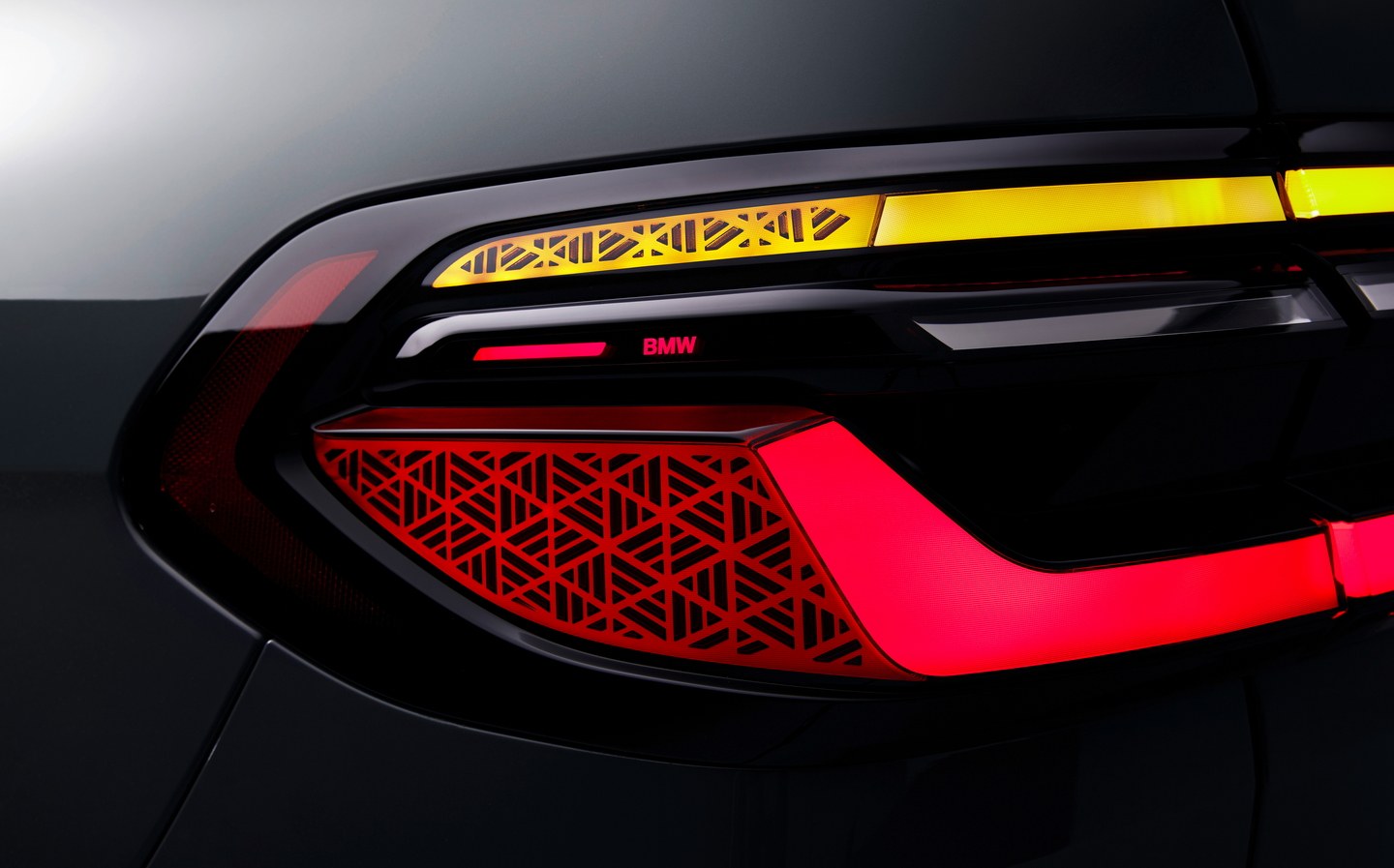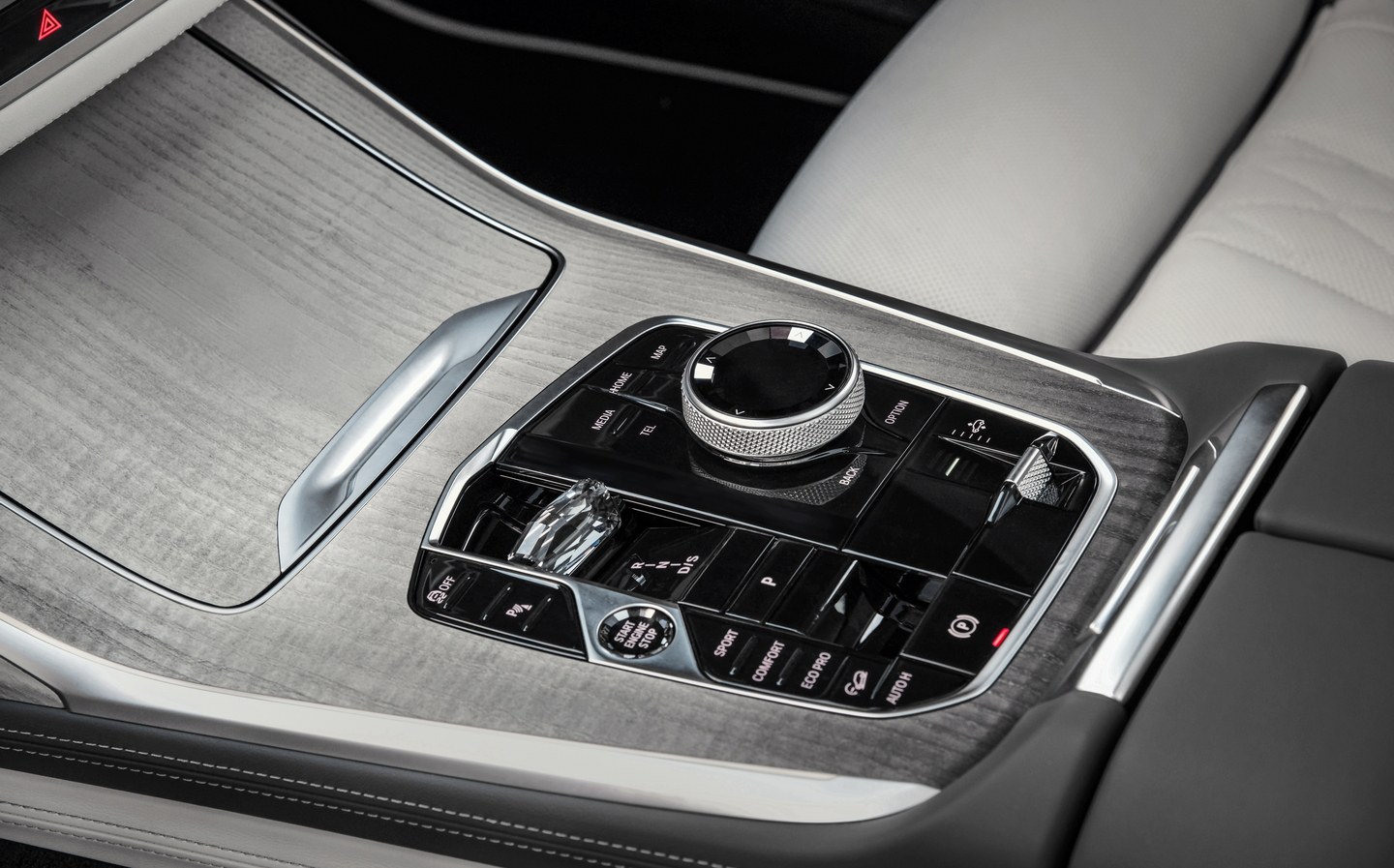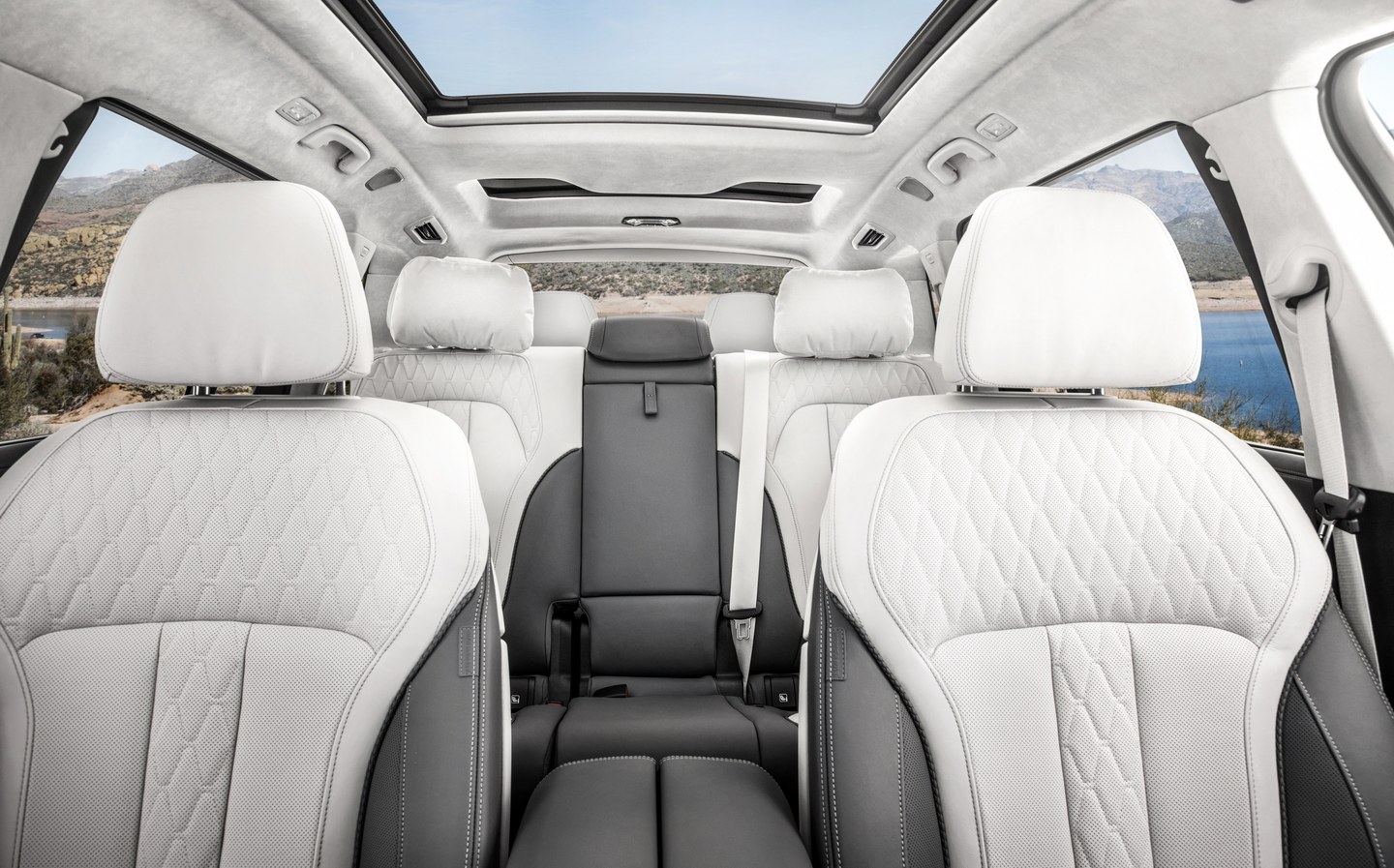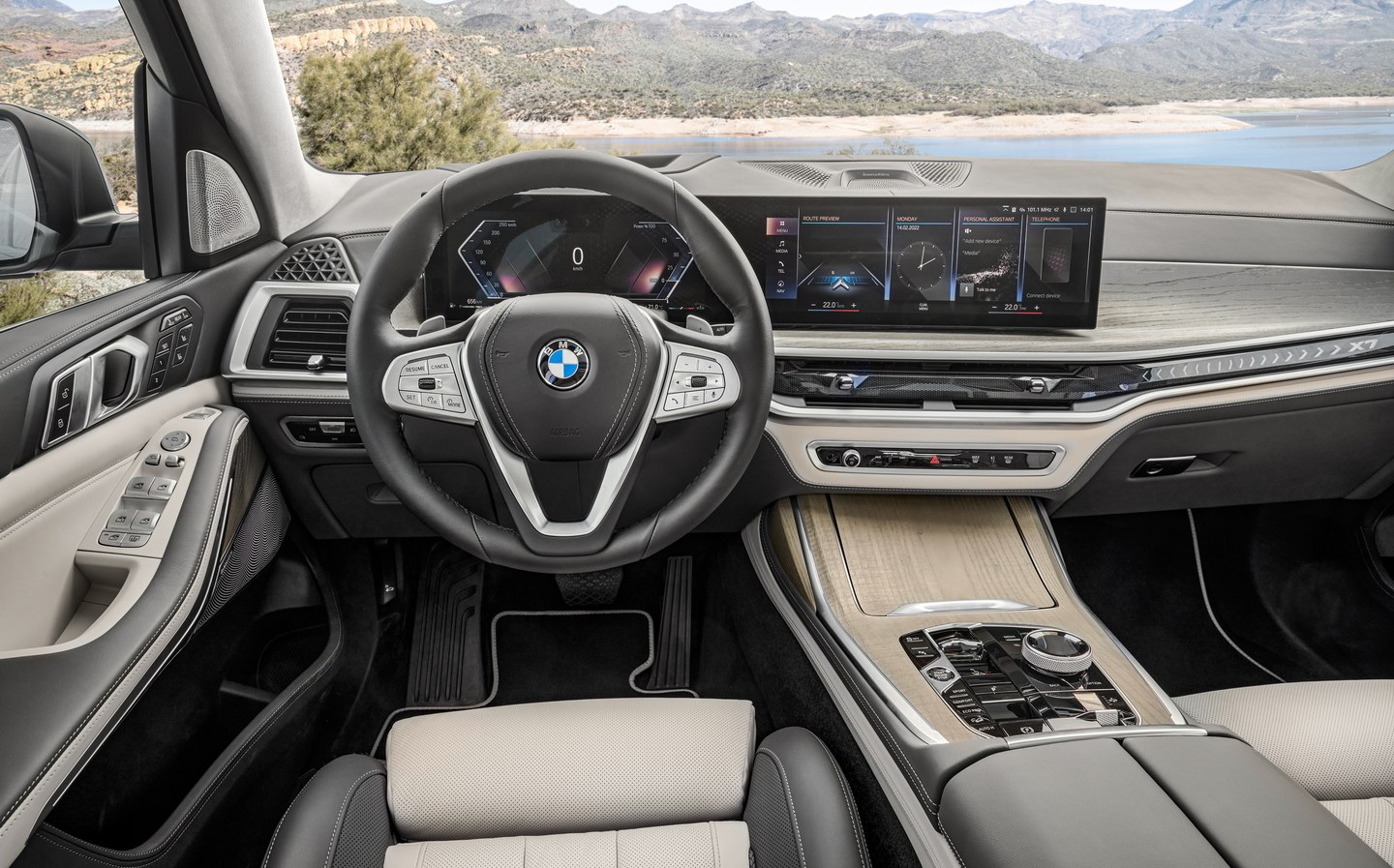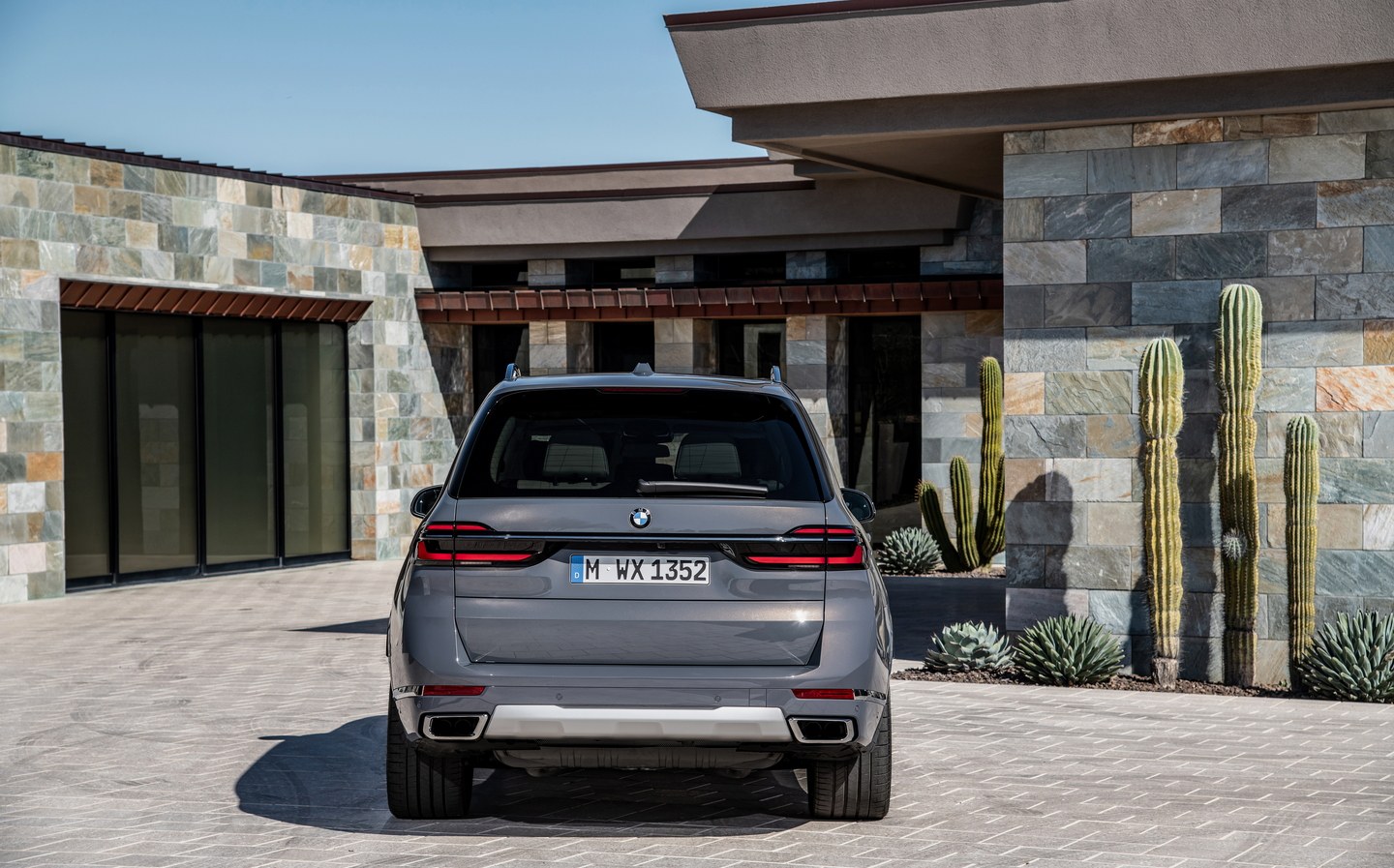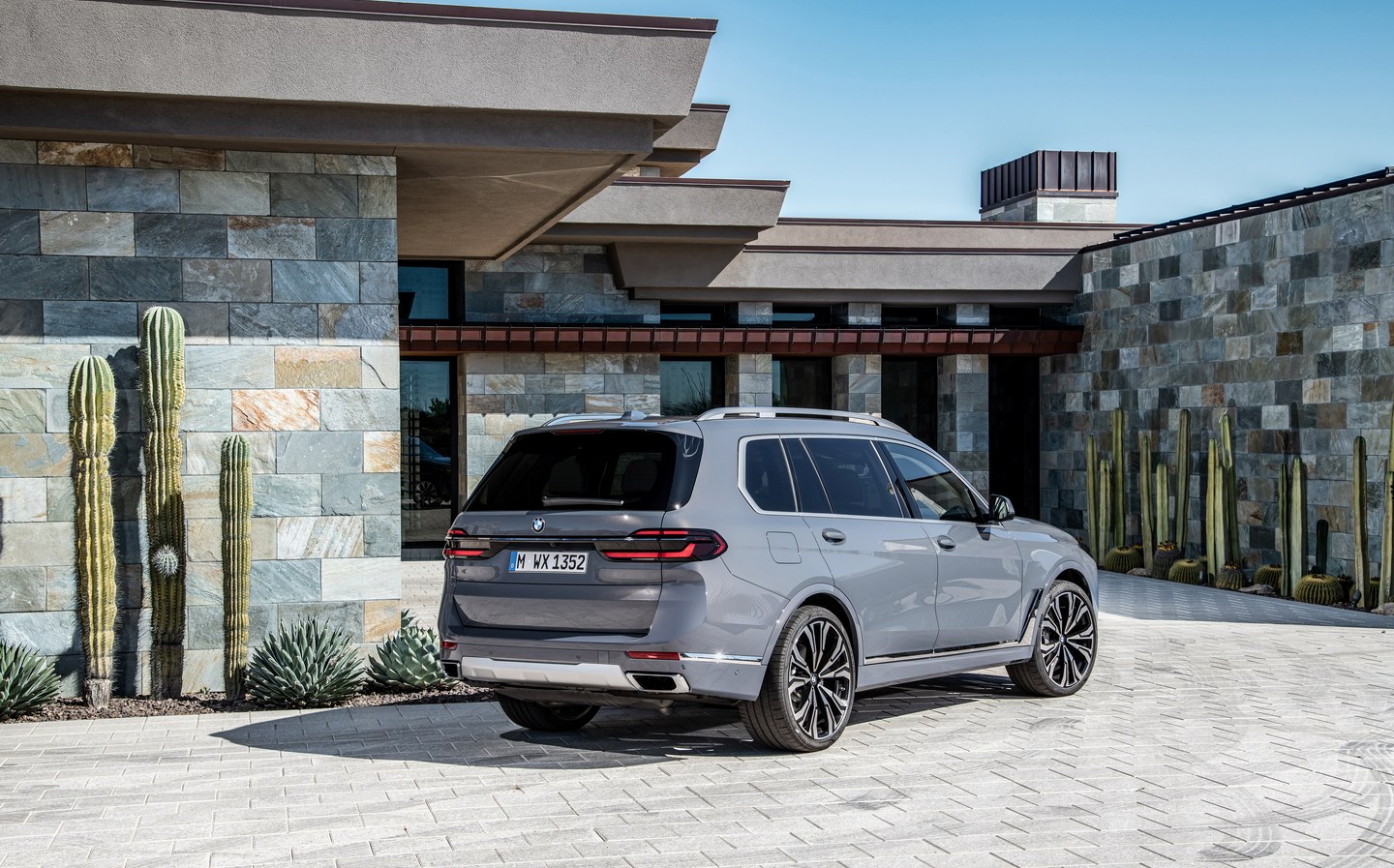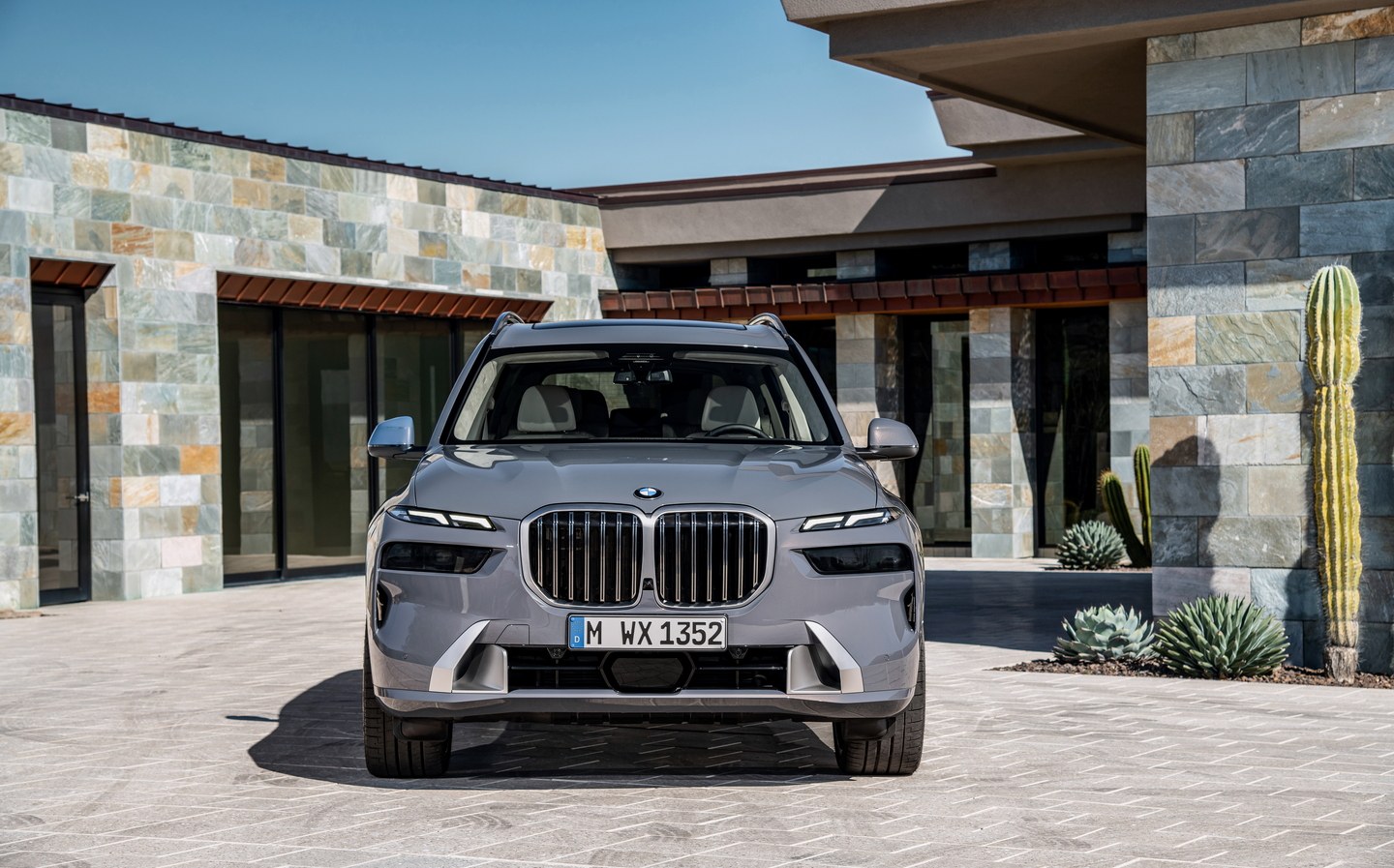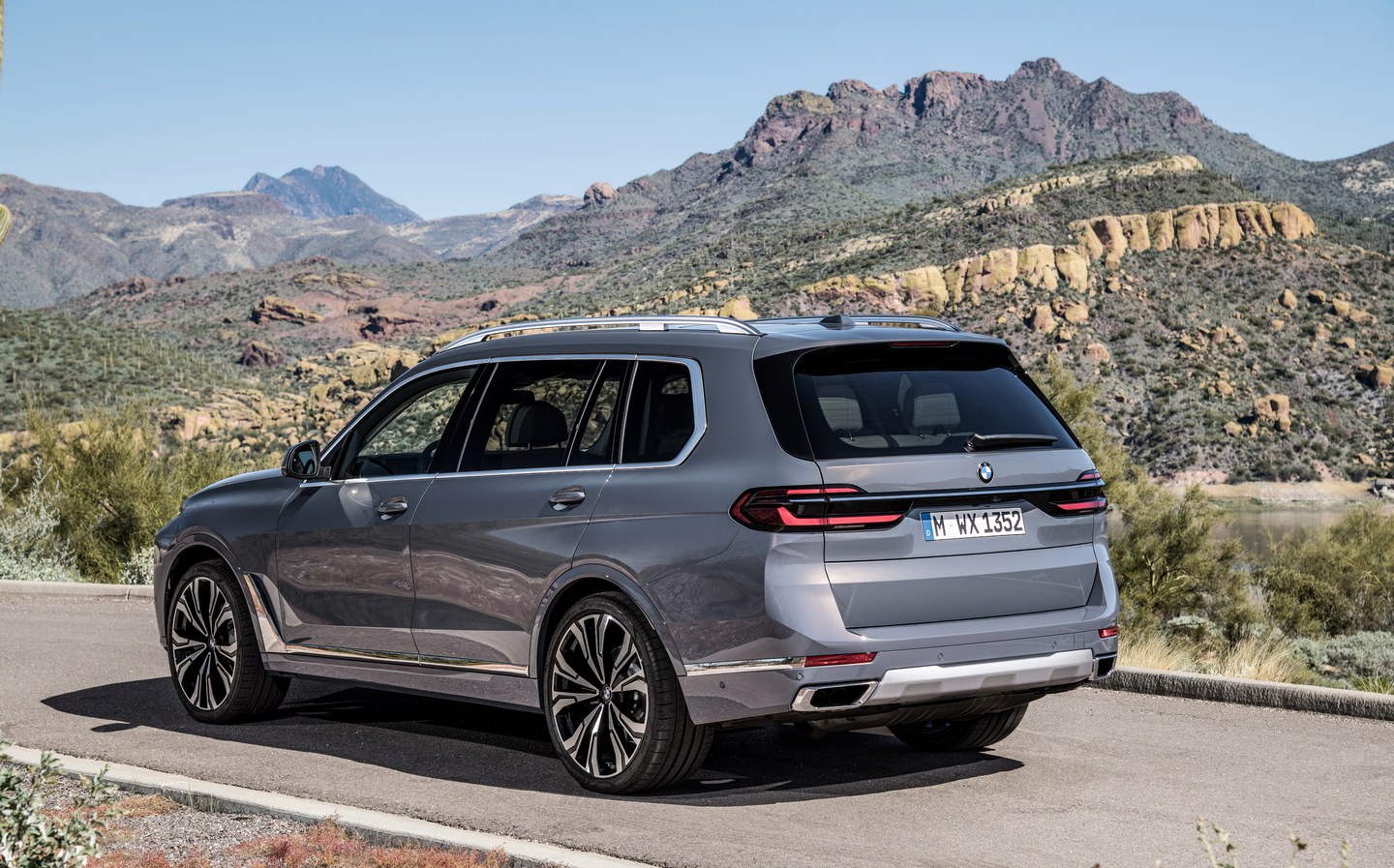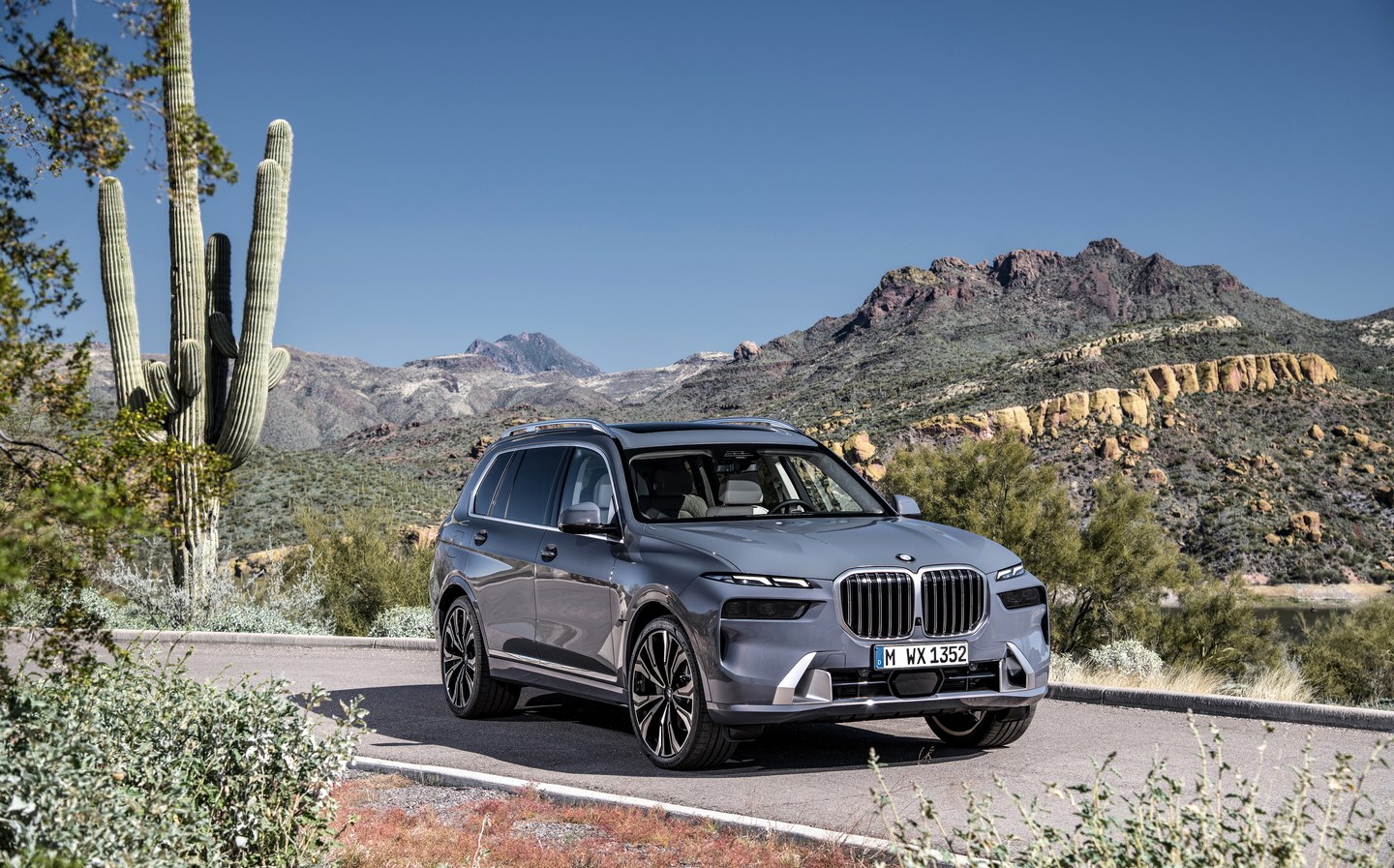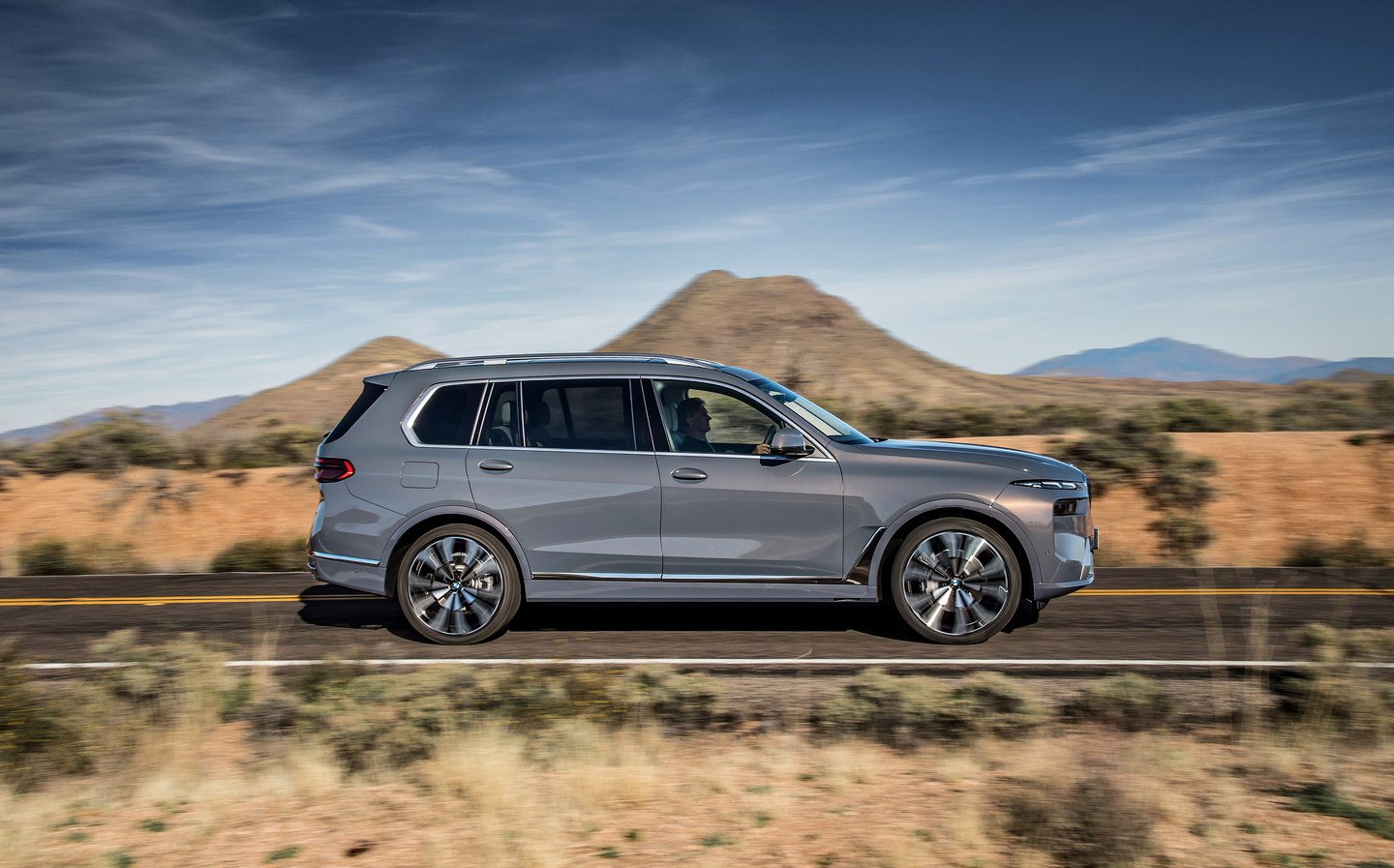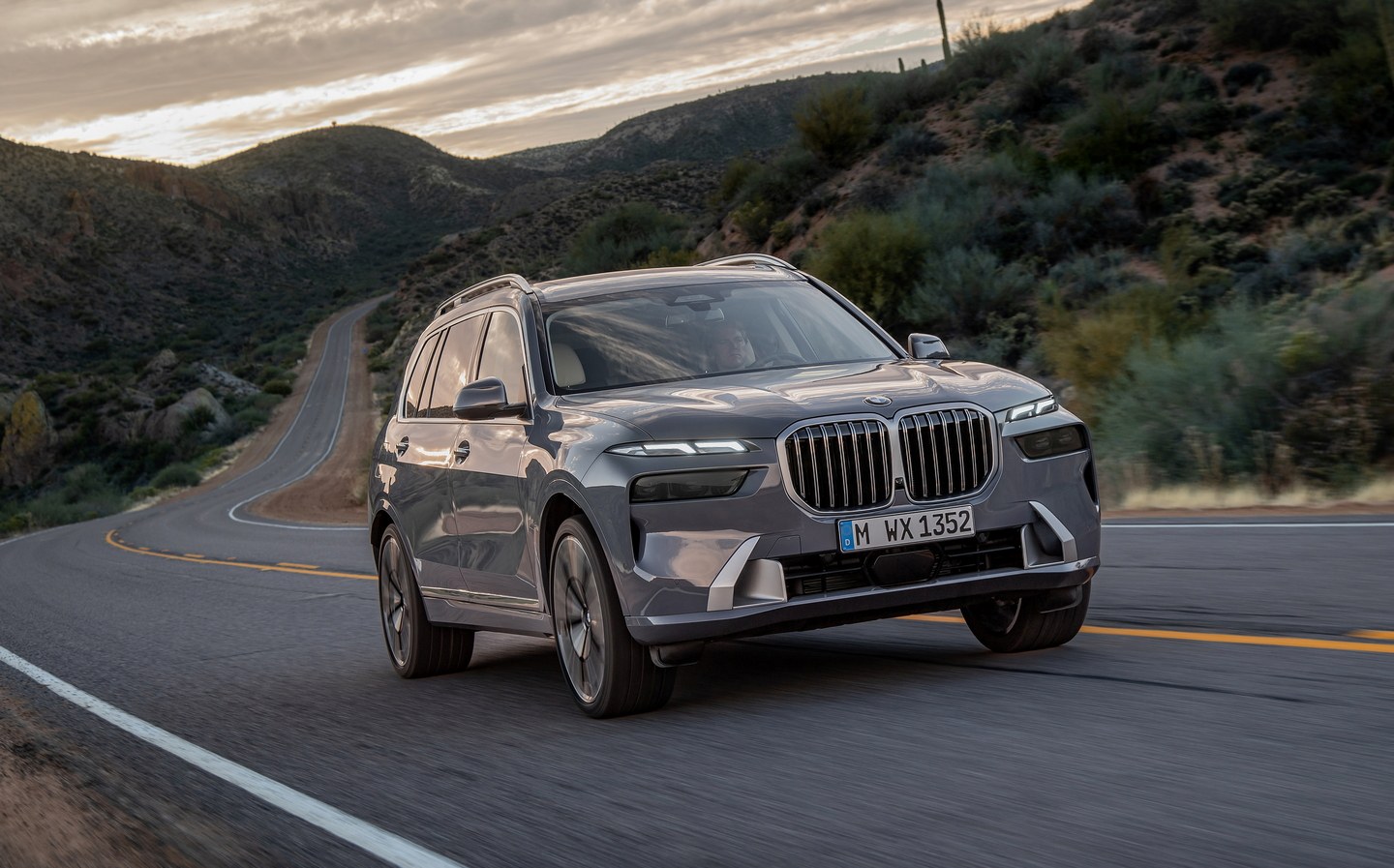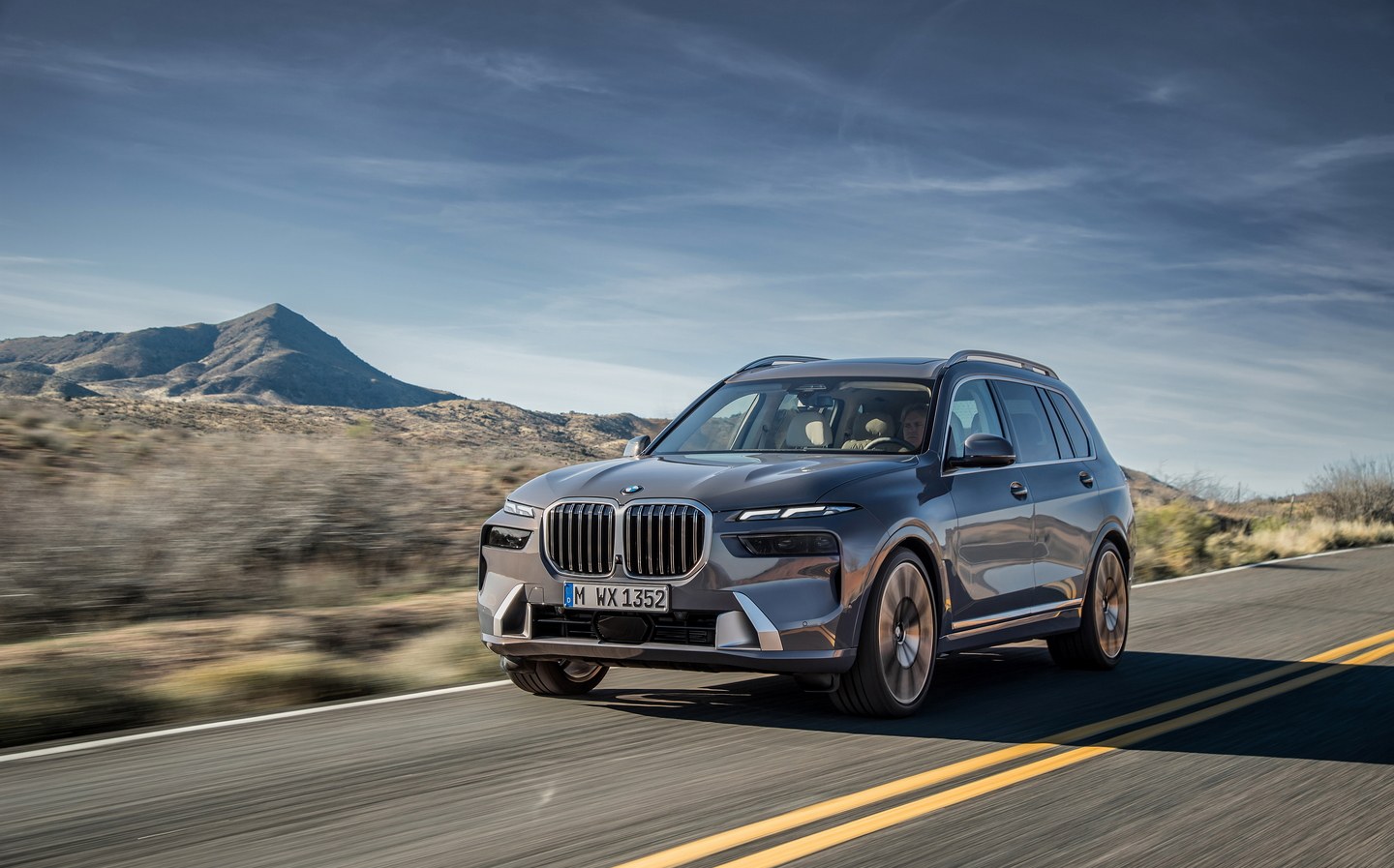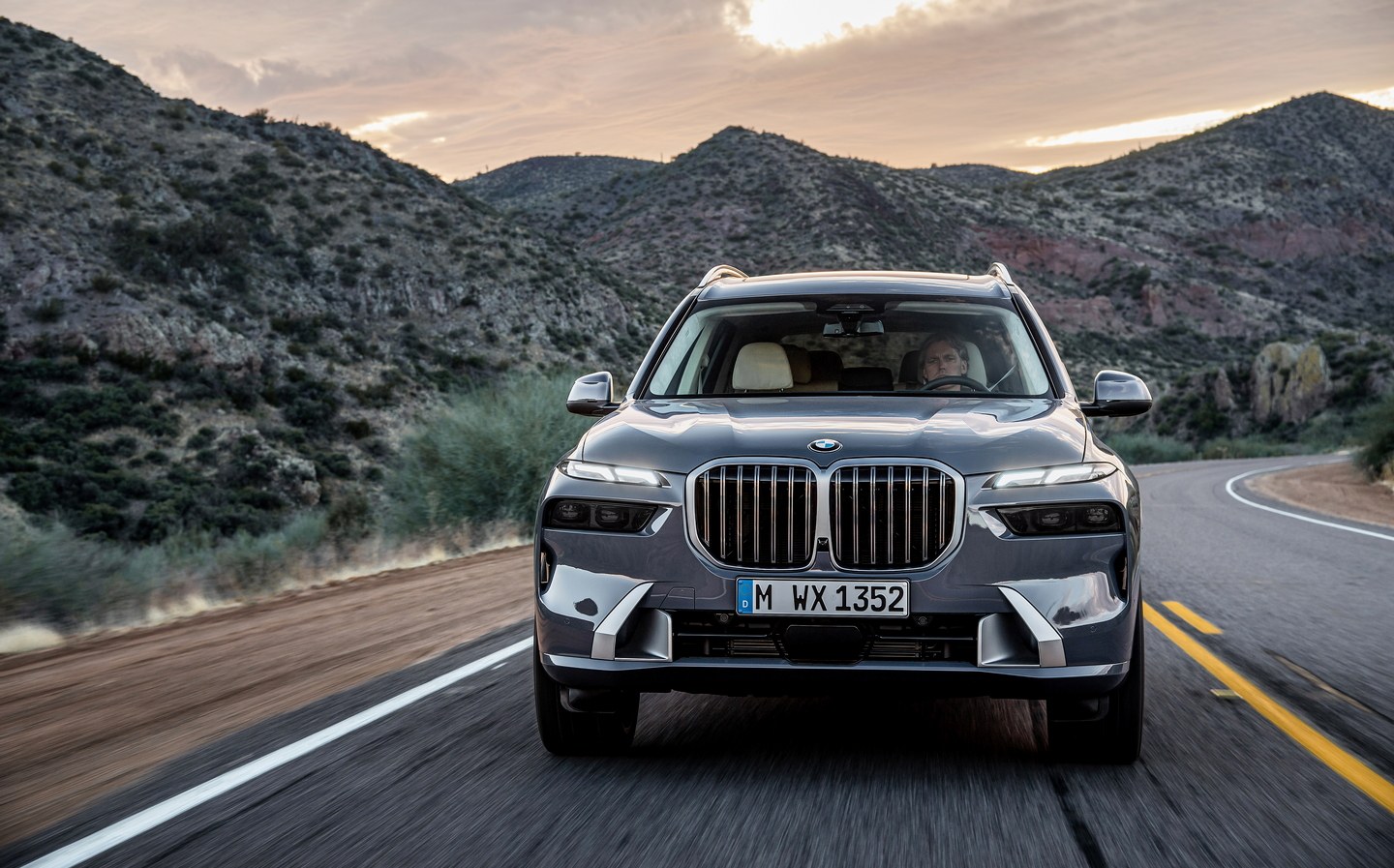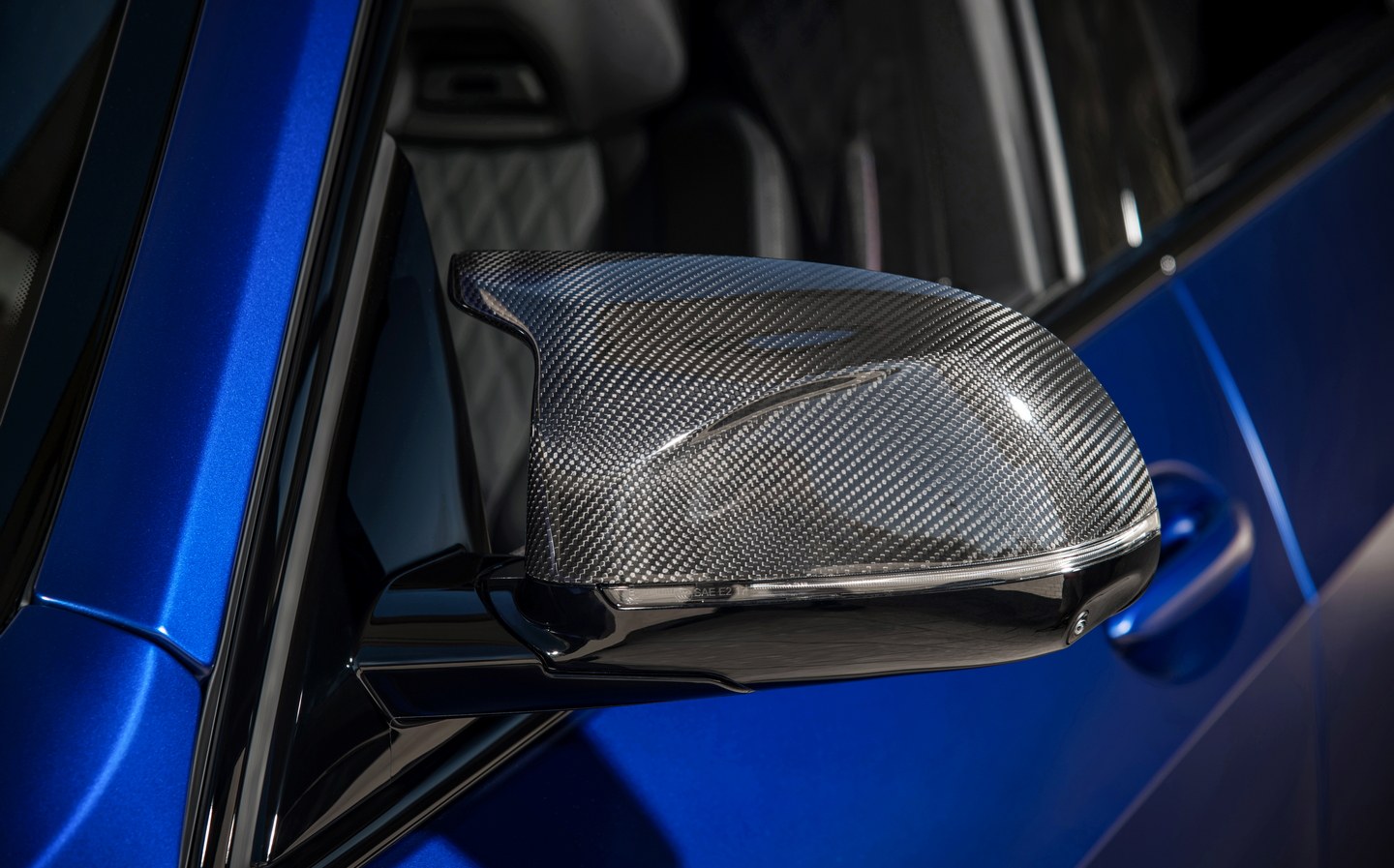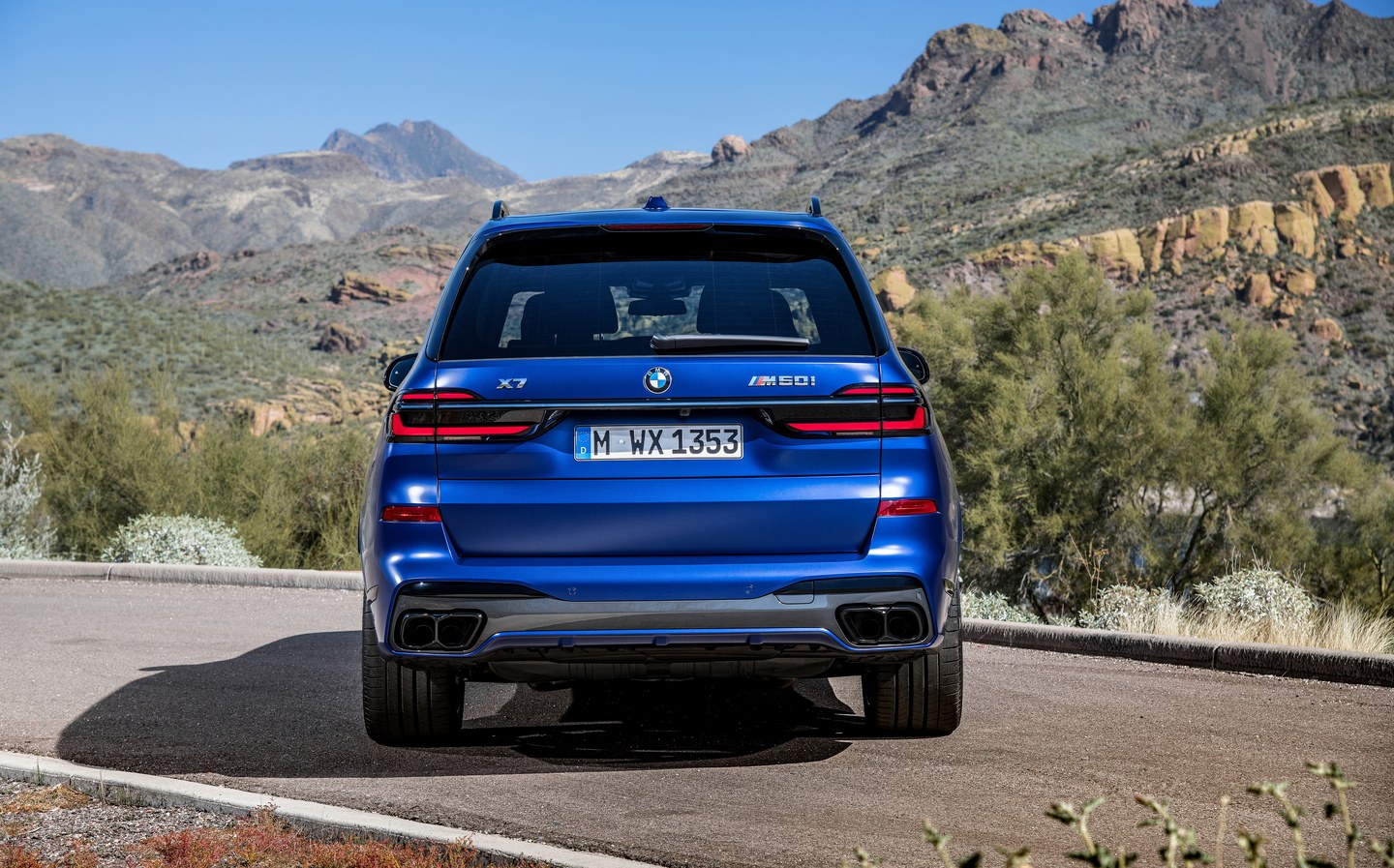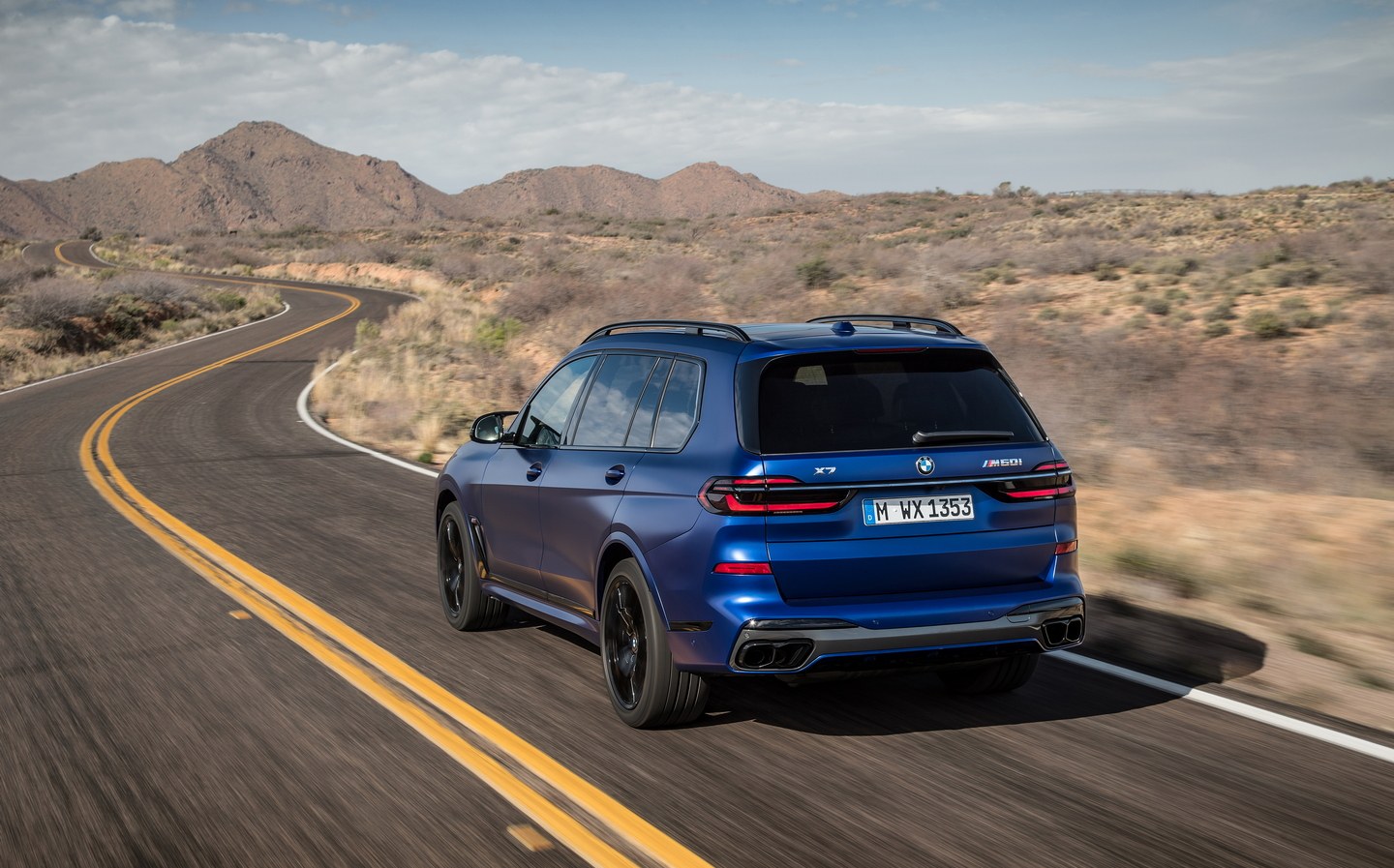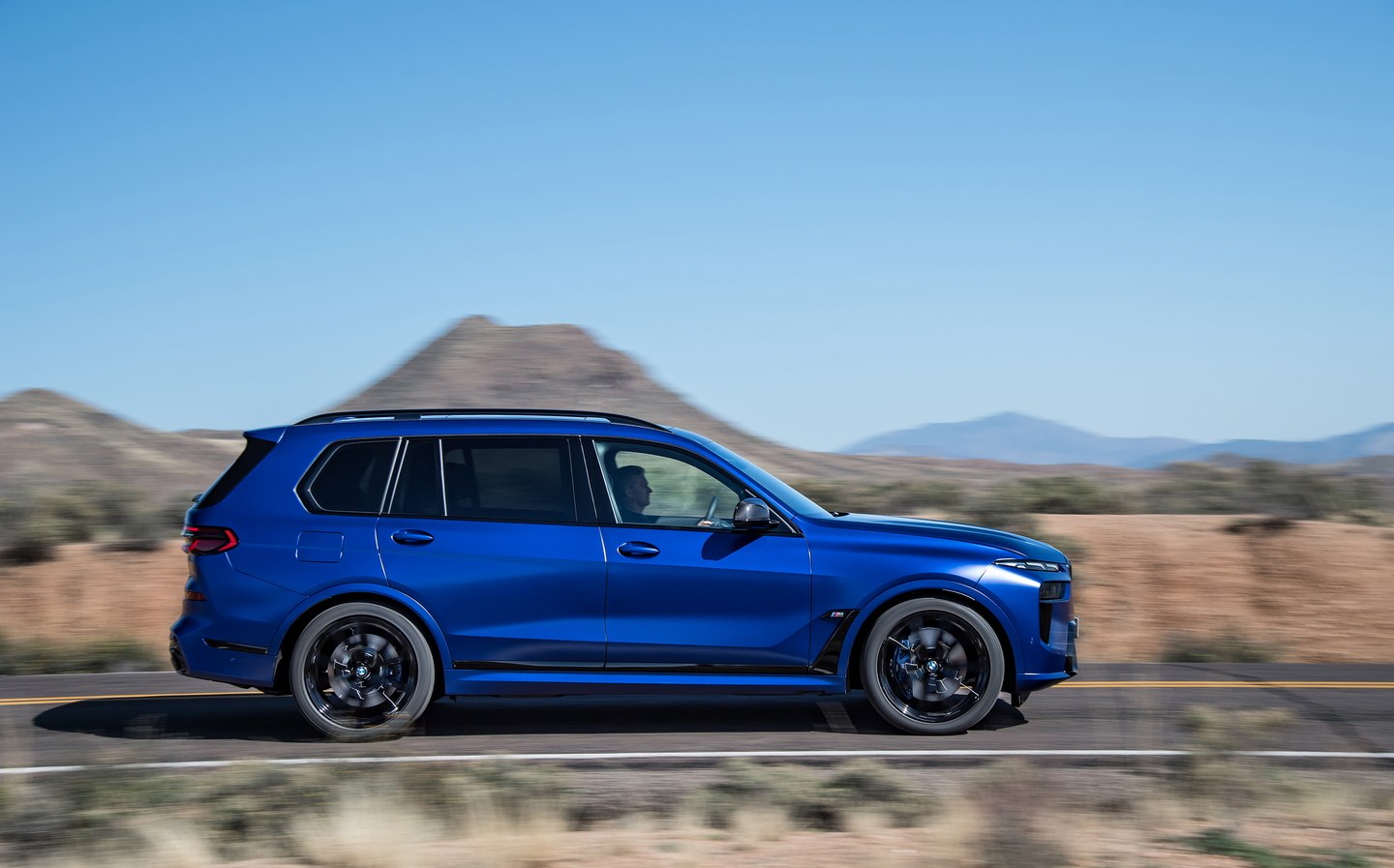Refreshed BMW X7 revealed with updated styling, revamped interior and mild-hybrid assistance
No plug-in option
BMW has released images and details of the latest version of its X7 following a mid-life refresh of the company’s large flagship SUV.
The X7 hasn’t seen a major upgrade, but the few exterior and interior tweaks that it has received keep it up to date with the company’s current design language and status at the top rung of the BMW SUV ladder.
The biggest styling changes come at the front and rear with a reworked front-end now incorporating split-level lighting. Up top is a set of ultra-slim daytime running lights while below sit the headlamps, framing the grille, the bars of which have been very slightly changed to present a two-tone finish. Speaking of the grille, buyers can choose an option (standard on the high-spec M60i xDrive model) where the back-lit grille is illuminated when one of the doors is opened. At the rear, both of the slim taillights are enclosed in one glass structure, which stretches the width of the tailgate.
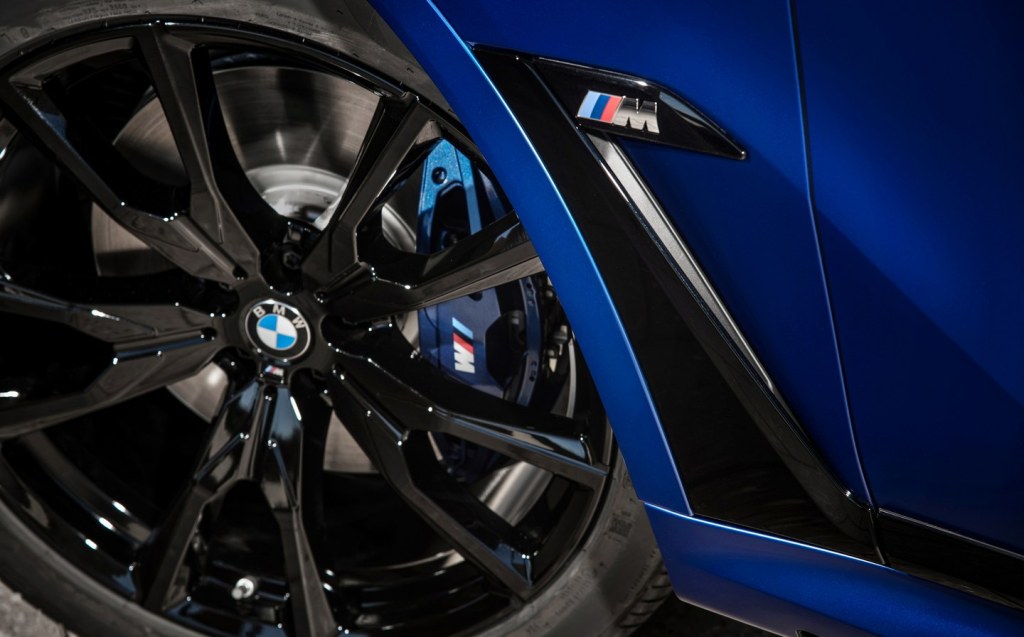
While the X7 comes as standard with 20in wheels, they can be optioned up to 23in in diameter, the largest diameter wheels ever factory-fitted to a BMW.
The updated interior is lighter and airier than before, partially thanks to the adoption of the Curved Display dash interface found elsewhere in the BMW line-up. In the X7 it consists of a 12.3in digital instrument cluster merged with a 14.9in infotainment screen to form one unit that has been made from anti-reflective glass so as to remove the need for a cowl to shield it from sunlight.
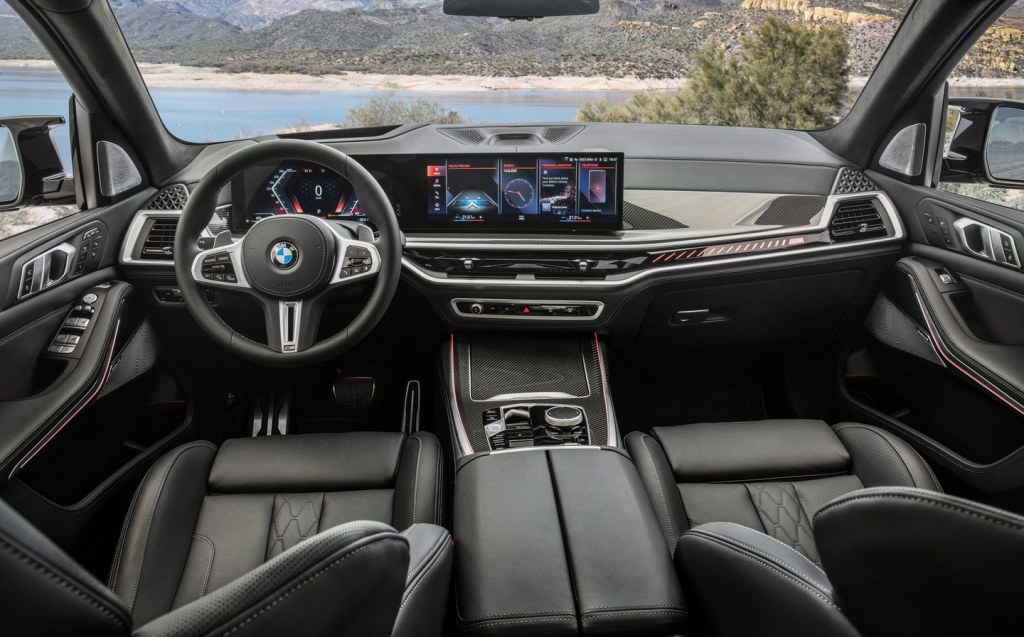
The new set-up, running the latest version of BMW’s operating system, has allowed the designers to remove some of the buttons, making the interior slightly less cluttered. While the Curved Display is angled towards the driver for ease of use, the front passenger can still view the screen, using touch, voice or (optionally) gesture to control it.
Beyond the addition of the curved display, the cabin has otherwise been refreshed with redesigned air vents and lighting. Heated front seats and a panoramic glass roof are now standard across the range, the latter available with an after-dark option that, using LED lights, gives the impression of a starlit sky.
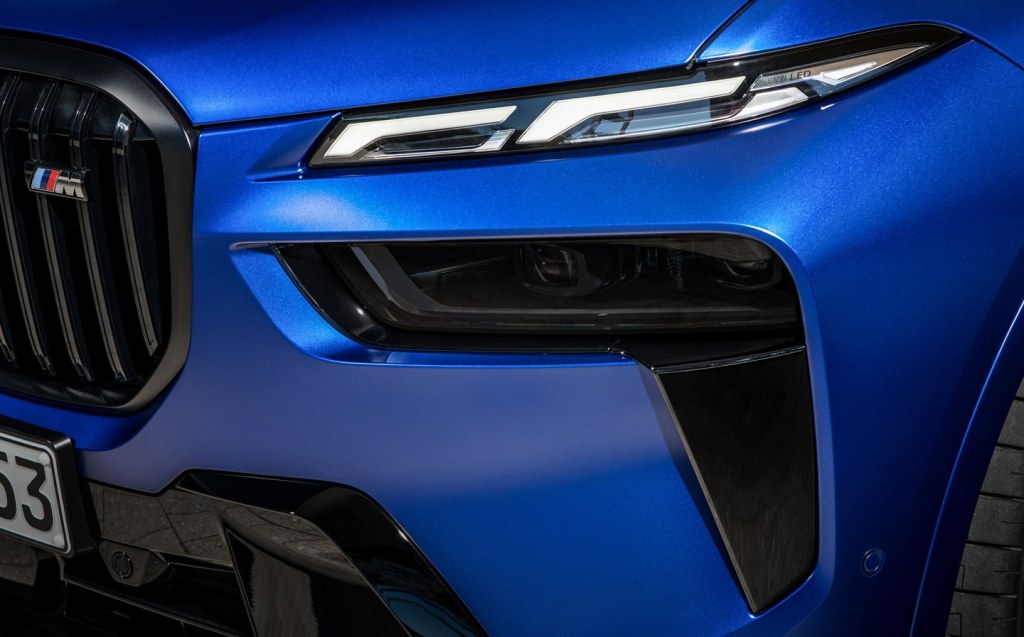
Though the X7 is a seven-seater, buyers can opt for six seats instead. All the seats are electronically adjustable, occupants being able to slide and fold the backrests via a series of control panels throughout the car. With the addition of the Comfort Pack, everyone including those in the third row can have heated seats, while the steering wheel and front armrests are also heated. The “thermo” function for the cup-holders can be adjusted to keep cups cool or hot as required.
When all the seats are in place there’s a reasonably useful 326 litres in the boot; with the second and third row folded away, there’s a massive 2,120 litres to play with, accessed through the split electrically opening tailgate.
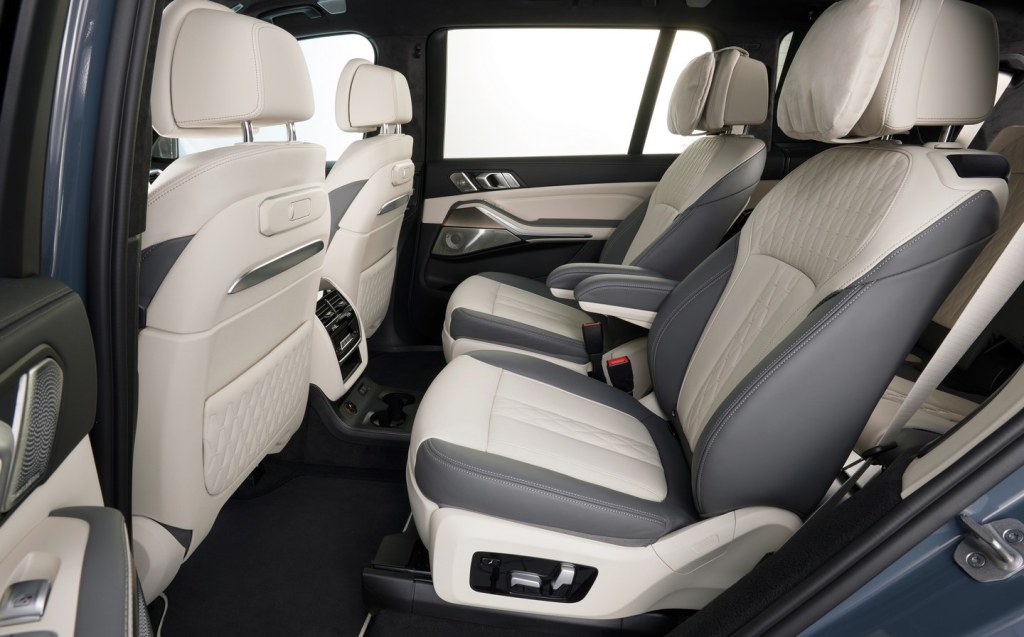
BMW says that the X7’s suite of advanced driver assistance features has been “enhanced” and includes a solid package of fairly typical items such as active cruise control with lane-keeping and lane-changing assistance and Parking Assistant (to help make parking and reversing easier). Reversing Assistant and Manoeuvre Assistant are both capable of memorising a complex series of low-speed steering inputs and repeating them, including in reverse.
Compared to the outgoing version of X7, the range of engines is slimmed down, though the major change is that all will now be assisted by a new 48V mild-hybrid system, for emissions compliance as much as efficiency.
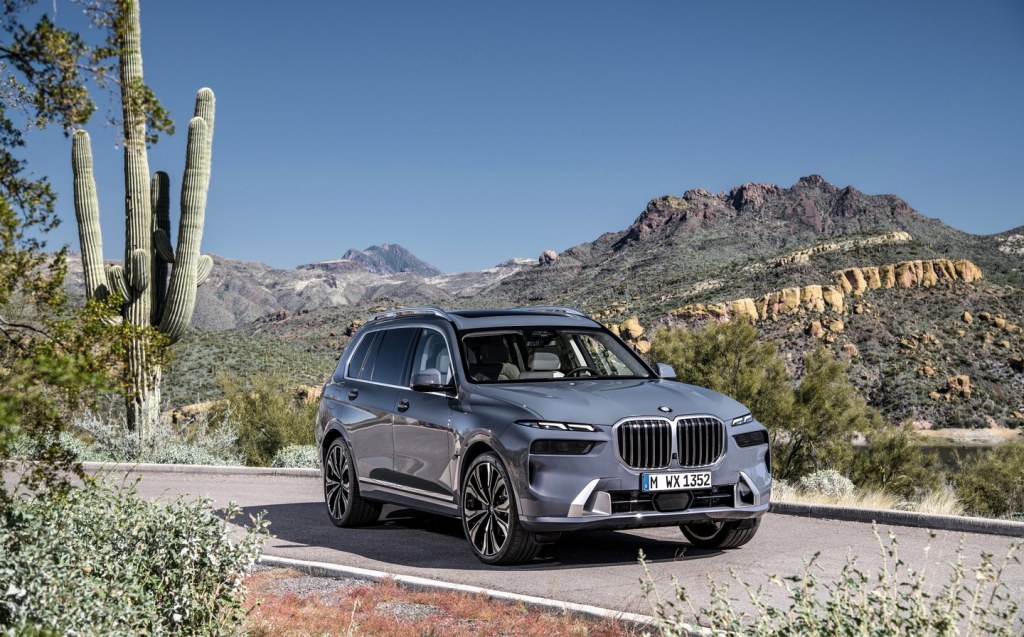
Opening the range is the xDrive40i equipped with a new 3l six-cylinder turbocharged petrol engine developing 375bhp in combination with the hybrid system. The hybrid system, BMW says, can provide some electric-only driving at very low speeds, though not enough that it could be classed as a full- rather than mild-hybrid. The diesel engine in the xDrive40d, again 3l, six-cylinder and turbocharged, develops 347bhp, though with no battery-only running.
At the top of the X7 tree is the version into which BMW’s M division has breathed some more power and sharper, sportier driving dynamics thanks to stiffer suspension. The M60i xDrive is fitted with a 4.4l twin-turbo V8 engine which, when coupled to the hybrid system, develops 523bhp equating to a 0-62mph sprint in 4.7 seconds. Stopping power comes courtesy of beefy four-pot front disc brakes that are standard on the M60i but can be optioned on other models as part of the M Sport Pro package, along with active roll stabilisation to keep everything a bit more planted.
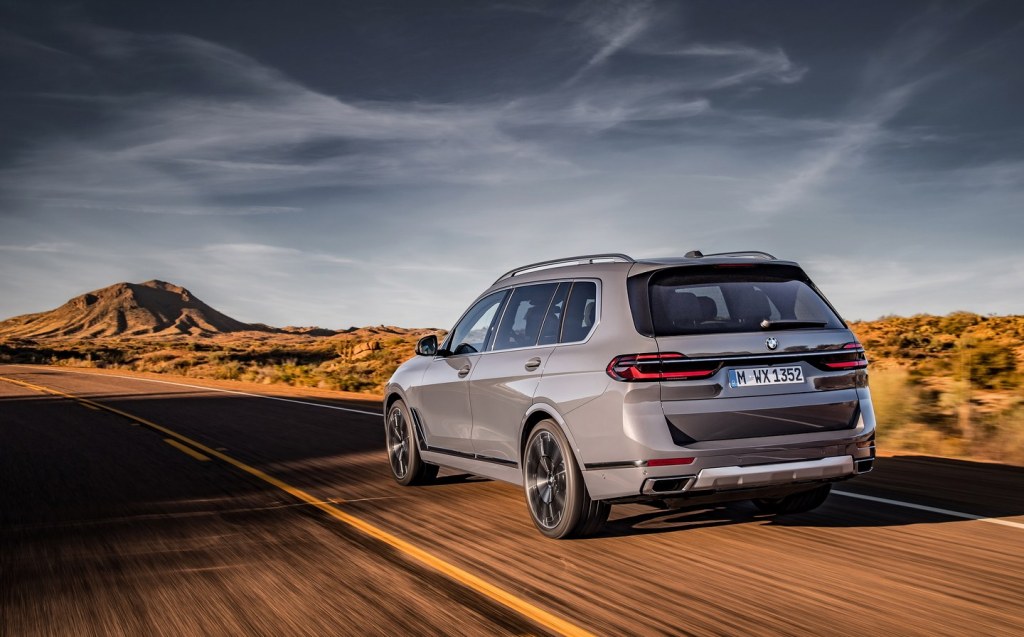
All engines send their power to the four wheels through a new eight-speed Steptronic transmission, though with the way the all-wheel-drive system is set up, most of that power goes towards the rear.
The refreshed BMW X7 is due for launch in August. However, with the current global semiconductor shortage, it’s possible that UK deliveries may not begin until later in the year or even 2023.
Related articles
- If you found the new BMW X7 interesting then you might like to read our review of the new Range Rover
- And you might be interested to read Will Dron’s extended test of the 2020 Range Rover Sport P400e plug-in hybrid
- Here are five of the best plug-in hybrid SUVs
Latest articles
- F1 2025 calendar and race reports: The new Formula One season as it happens

- Seven great automotive events to visit this summer, from F1 to art and champagne

- Watch new Porsche 911 GT3 smash Nürburgring record for manual cars

- Skoda Elroq 2025 review: Czech carmaker can’t seem to miss with its electric family cars

- Five best electric cars to buy in 2025



